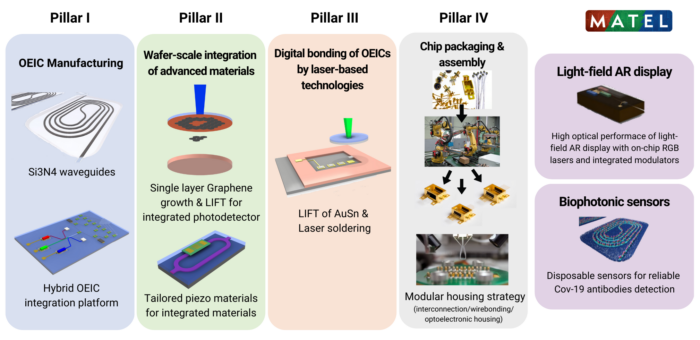MatEl builds upon advanced materials and beyond the state-of-the-art digital processing technologies to enable new integration schemes fostering the wide adoption of hybrid OEICs to industrial and biomedical applications.

Overview
Europe is facing the challenge of adapting to a new generation of optoelectronic device requirements: high performance, multi-functionality and cost efficiency in a miniaturized footprint.
These requirements can only be achieved if novel schemes for on-chip integration emerge. MatEl offers a unique solution to this challenge
Objectives
MatEl’s objective is to introduce novel integration schemes enabled by laser processing of advanced materials and enable the digital bonding of heterogeneous components for the next generation of OEICs.
Impact
MatEl’s vision of enabling multiple functionalities in a miniaturized footprint will pave the way for a broad spectrum of next-gen optoelectronic applications, strengthening the EU’s photonics and microelectronics industrial capabilities.
Expected impact:
- Next generation of OEIC-based devices: wide-bandwidth, minimized losses & multifunctionality in miniaturized form factors
- Lowering the barriers for ΟΕIC uptake by high-tech SMEs
- Strengthening the EU’s industrial capability in photonics and microelectronics
- European strategic autonomy in OEICs
- New employment positions in innovative SMEs
- Green and digital manufacturing approach fostering chemicals and waste minimization
- Improved quality of life and longevity of EU citizens